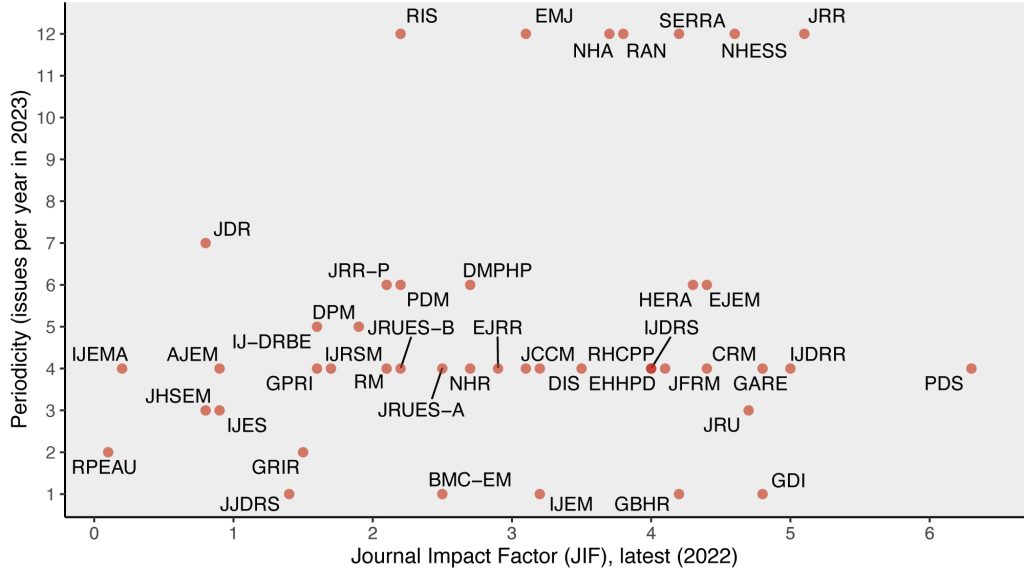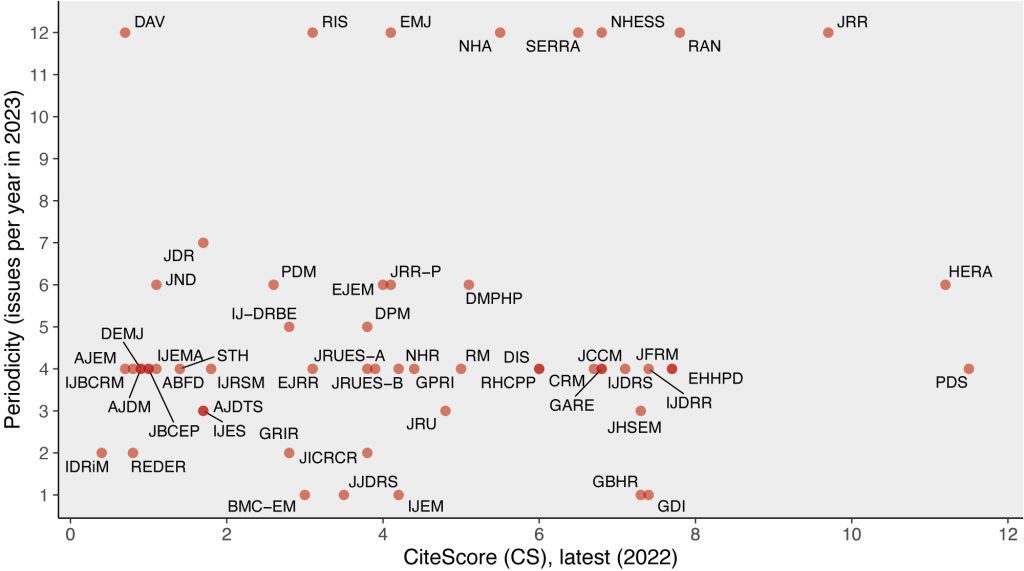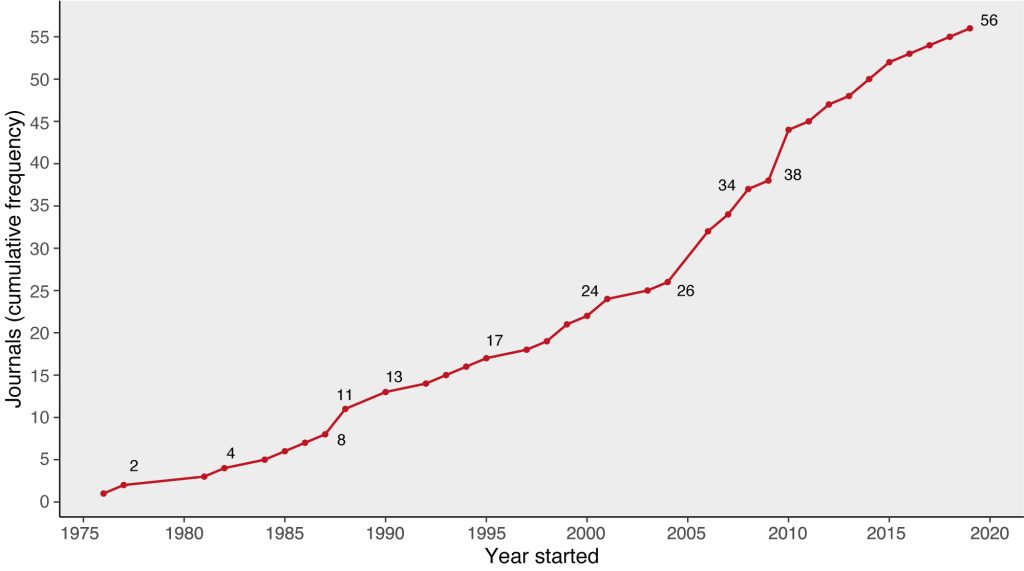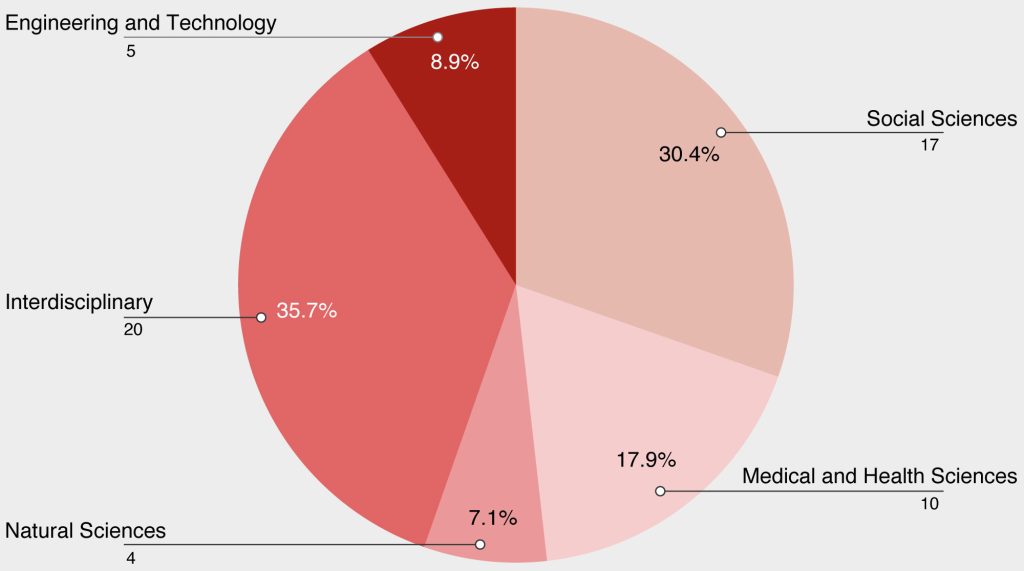By Vicente Sandoval
http://dx.doi.org/10.17169/refubium-45311
In this initial post, we are excited to introduce you to The Disaster Research Journals List 2023, an extension that has evolved from the foundational Disaster Research Journals (DRJ) Database. With utmost care, we have curated the DRJ List, which comprises a collection of esteemed journals dedicated to the field of disaster research and science. Our primary aim is to offer a potential resource for scholars, practitioners, and students navigating the complex and evolving landscape of disaster research literature.
While still in its nascent stages, the DRJ List and Database aim to offer assistance to researchers, professionals, and policymakers seeking relevant publication avenues and consolidated sources of information in this field. Furthermore, they may serve as tools to track emerging trends and witness the evolution of the field, a process that has gained significant momentum over the past few decades, as highlighted by Alexander et al. in 2021. This resource represents not only a compilation of journals but also an embodiment of our commitment to furthering the discourse of disaster research. Your feedback and engagement will be invaluable as we navigate this exploratory journey together.
The DRJ List 2023 can be downloaded in the following links:
- FU-Berlin Referium: http://dx.doi.org/10.17169/refubium-40035
- ResearchGate: https://www.researchgate.net/publication/373389542
To compile and catalog existing journals, we’ve implemented straightforward steps and principles. These endeavors are designed to transform the DRJ List into a transparent and dependable resource (for more details about the methodology please use the links above):
- Only journals (periodicals) in the field of disaster research/science.
- Only journals whose main language is English (lingua franca) or as a second language (multi-language). Nonetheless, we are open to receiving suggestions of journals in other languages. For suggestions, please contact the curator (vicente.sandoval@fu-berlin.de).
- Only journals indexed in Web of Science (WoS) and/or Scopus.
Highlights
Indexation and impact
Out of 111 collected journals in the DRJ Database by August 2023, 56 (50.5%) were indexed in WoS and/or Scopus. These 56 journals are part of the DRJ List 2023, or sample. In this sample, 55 (98.2%) are indexed in Scopus, while 44 (78.6%) are indexed in WoS.
The selected journals exhibit a diverse range of Journal Impact Factor (JIF) scores, with the majority (31) falling between 1 and 4.5, resulting in a group average of 2.95 points (see Figure 1). These scores encompass a spectrum from the lowest at 0.1 (RPEAU journal) to the highest at 6.3 (Progress in Disaster Science). Similarly, the CiteScore (CS) metric for indexed journals shows a comparable diversity in scores, with the majority (42) clustering around 1 and 7.5, yielding an average of 4.31 points (see Figure 2). These scores span from the lowest at 0.4 (IDRiM journal) to the highest at 11.5 (Progress in Disaster Science).


Cost for authors
Among the 56 journals we have selected, a significant 44 (about 78.6%) require authors to pay for services related to editing and publication, which are known as Author Processing Charges (APC). On the other hand, 10 (around 17.9%) journals do not have these charges, and 2 (approximately 3.6%) maintain an ambiguous stance in regard to their publication policies. When it comes to costs, journals with APCs ask authors to pay an average of 2392.70 EUR (with a median of 2540 EUR) for their accepted manuscripts. The fees vary, ranging from as low as 407.76 EUR (seen in Science of Tsunami Hazards, TSI-USA) to as high as 3660 EUR (as seen in Risk Analysis, Wiley-USA). It is important to note that most of these charges are tied to making articles ‘Open Access’ after they are published, especially in ‘Hybrid’ open access journals. Some journals, particularly ‘Full’ open access ones, require mandatory APCs.
Evolution and growth
The most long-standing and actively indexed journal within the sample is the ‘Geneva Papers on Risk and Insurance,’ published since 1976 by Palgrave Macmillan & The Geneva Association (Switzerland), amassing a 47-year history. Conversely, the most recently introduced indexed journal is ‘Progress in Disaster Science,’ initiated by Elsevier (England) in 2019 (see Figure 3). Nevertheless, there exist older journals within the DRJ Database, like the ‘Disaster Prevention Research Institute Annuals’ by Kyoto University (Japan), originating in 1957 and thus celebrating 66 years of existence while remaining in operation. However, this and others were not included due to absence from indexing in platforms like WoS or Scopus or discontinuation. Furthermore, the DRJ Database encompasses a notable count of 16 journals established only since 2020.

Classification
Drawing from the ‘Classification and distribution by Fields of Research and Development (FORD)’ by OECD (2015), the indexed journals can be categorized into distinct groups, ordered from the highest to the lowest count as follows: Interdisciplinary (20); Social Sciences (17); Medical and Health Sciences (10); Engineering and Technology (5); Natural Sciences (4) (see Figure 4).

Other aspects
In analyzing the selected journals, we find diverse patterns in their publication frequency, spanning from monthly (8) to annual (5), with instances of varying intervals in between. Notably, two journals publish five times a year, while a singular journal boasts a frequency of seven issues annually. Delving into open access models, 61.7% (34) follow the ‘hybrid’ approach, allowing authors to opt for ‘open access’ through an APC (as detailed above), while 35.7% (20) embrace the ‘full’ open access model, offering unrestricted reader access. A smaller fraction, 17.9% (10), of journals adhere to ‘full’ open access with no APCs, and 3.6% (2) operate on a subscription basis. As for manuscript processing time or ‘turnaround time’, the average spans around 60.71 days, ranging from 27.2 days (Risks, MDPI-Switzerland) to 112 days (Georisk, Taylor & Francis-England). In terms of ethical standards, 80.4% (45) of the journals declare adherence to COPE (Committee on Publication Ethics) ethics guidelines, while 19.6% (11) omit mention of these on their websites.
In wrapping up our dive into the realm of disaster research journals, we recognize the profound interplay between academia, practice, and policy within the realm of adversity. With the DRJ List as our starting point, we envision a collaborative platform that sparks ideas, advances discussions, and propels scholarly endeavors. As this resource takes further shape, we eagerly anticipate the contributions it will elicit, molding the ongoing discourse of disaster research. Your feedback and engagement will be invaluable as we navigate this exploratory journey together. For comments and suggestion, please contact the DRJ List curator Vicente Sandoval (vicente.sandoval@fu-berlin.de or vicente.sandoval.h@gmail.com).
References
Alexander, D., Gaillard, J.C., Kelman, I., Marincioni, F., Penning-Rowsell, E., Niekerk, D. van, & Vinnell, L. J. (2021). Academic publishing in disaster risk reduction: Past, present, and future. Disasters, 45(1), 5–18. https://doi.org/10.1111/disa.12432
OECD. (2015). Frascati Manual 2015: Guidelines for Collecting and Reporting Data on Research and Experimental Development. Organisation for Economic Co-operation and Development. https://www.oecd-ilibrary.org/science-and-technology/frascati-manual-2015_9789264239012-en